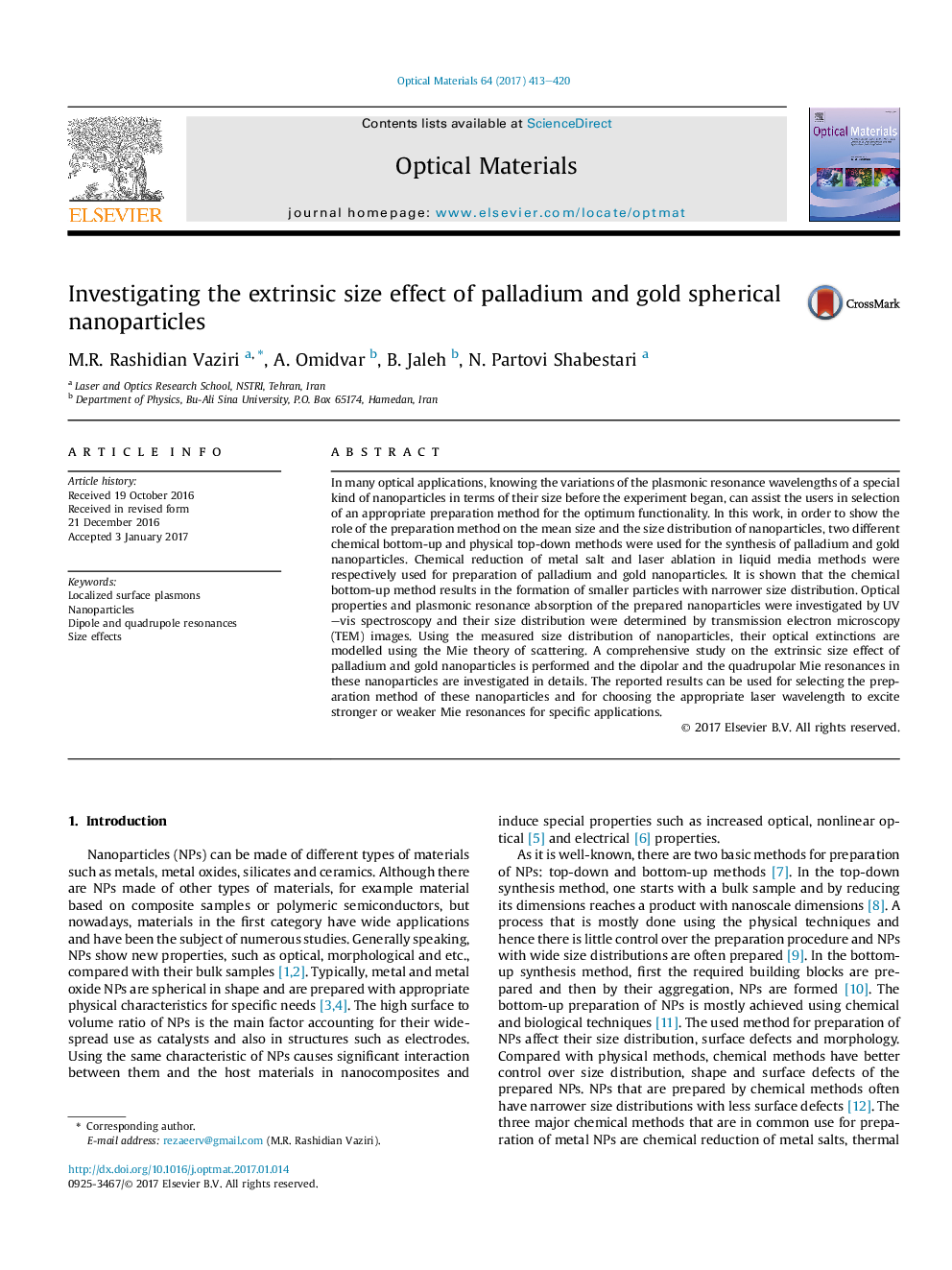| Article ID | Journal | Published Year | Pages | File Type |
|---|---|---|---|---|
| 5442727 | Optical Materials | 2017 | 8 Pages |
Abstract
In many optical applications, knowing the variations of the plasmonic resonance wavelengths of a special kind of nanoparticles in terms of their size before the experiment began, can assist the users in selection of an appropriate preparation method for the optimum functionality. In this work, in order to show the role of the preparation method on the mean size and the size distribution of nanoparticles, two different chemical bottom-up and physical top-down methods were used for the synthesis of palladium and gold nanoparticles. Chemical reduction of metal salt and laser ablation in liquid media methods were respectively used for preparation of palladium and gold nanoparticles. It is shown that the chemical bottom-up method results in the formation of smaller particles with narrower size distribution. Optical properties and plasmonic resonance absorption of the prepared nanoparticles were investigated by UV-vis spectroscopy and their size distribution were determined by transmission electron microscopy (TEM) images. Using the measured size distribution of nanoparticles, their optical extinctions are modelled using the Mie theory of scattering. A comprehensive study on the extrinsic size effect of palladium and gold nanoparticles is performed and the dipolar and the quadrupolar Mie resonances in these nanoparticles are investigated in details. The reported results can be used for selecting the preparation method of these nanoparticles and for choosing the appropriate laser wavelength to excite stronger or weaker Mie resonances for specific applications.
Related Topics
Physical Sciences and Engineering
Materials Science
Ceramics and Composites
Authors
M.R. Rashidian Vaziri, A. Omidvar, B. Jaleh, N. Partovi Shabestari,
